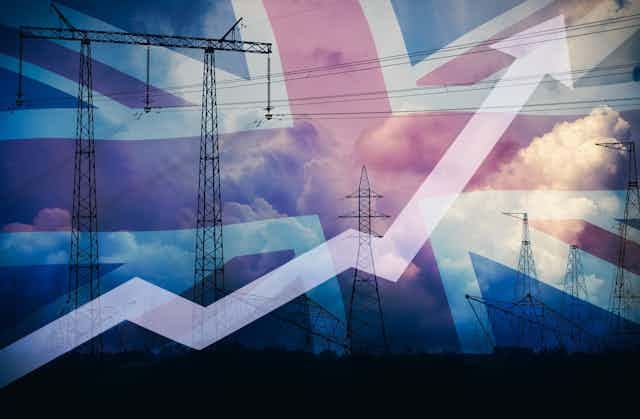The latest annual inflation rate rise to 4% has dampened expectations about how soon the Bank of England might start cutting interest rates. Marginally higher than the previous month’s figure of 3.9%, it was a surprise to some economists.
This adds to the economic uncertainty which may make the Bank move cautiously. The impact of the war in the Middle East, and Houthi attacks in the Red Sea on shipping on transport costs and supply chains remains unclear, for example. And then there is the decrease in UK job vacancies and the slowdown in wage increases to consider before interest rates start heading downwards.
But perhaps the Bank’s apparent focus on cooling down the economy via high interest rates is the wrong way to tackle inflation. Our work looks at a different approach which would use a much wider range of considerations including investment, industrial priorities, labour market policy and tax rates.
We describe it as a “needs-based” approach to inflation and government policy, because it is designed to address specific social, environmental and economic requirements. It means asking questions about things such as how much investment we need in renewable energy, public transport and housing to achieve a zero-carbon economy by 2050? Or how many care workers will help meet changing demographic trends – and what is a decent rate of pay for the valuable work they do?
Identifying these needs, and the right level of investment to satisfy them, also requires a different approach to politics more generally – because it demands a concerted effort towards learning what the UK population needs. It means directly engaging with citizens (through regional assemblies or surveys for example) and using their knowledge and experience to inform decisions. This information can then be used to formulate policies both fiscal (by the governement) and monetary (by the Bank of England).
It sounds like a simple and obvious idea – finding out what people actually need, and then developing policies which might help them. But the government’s current fiscal targets – lower borrowing, lower debt, a cap on welfare spending – and the Bank of England’s strategy of aiming for an inflation rate of 2% are far removed from these goals.
Instead, they are blunt tools which are failing to tackle multiple crises. But if fiscal policy was tied to a major public investment programme, research suggests it could help to tackle major issues such as social care, health, education, food, energy and climate change.
For this approach to work, the Bank of England needs to adjust to an inflation target that moves within a band of around 4%-5%. But it also needs to be involved with an area outside its current remit – achieving a full (or very high) rate of employment, which brings clear economic benefits such as increased productivity and greater tax revenue.

Central banks can influence employment rates by using the money supply to maintain stable prices as well as supporting public and private investment that leads to job creation. Targeting employment as well as inflation would require monetary policy to take into account public investment plans, as well as higher taxes on income and wealth to fund it.
Inflating inflation for the general good
And given the high levels of required investment in both the green and the care economies, monetary policy needs to be more “expansionary”. This effectively means lower interest rates and increasing the money supply, which would lead to inflation rates being higher than 2%.
After all, the current 2% inflation target and recent interest rate hikes have not been good for the UK economy. And while many people might be alarmed at the idea of an inflation target of 4%-5%, the impact would actually have benefits.
A more vibrant economy with new investment in social housing, renewable energy, public transport, health care, childcare, education, decent jobs and pay rises could reverse the decades-long squeeze on real wages.
To absorb the effects of potential temporary cost shocks cause by higher inflation, some economists) suggest using price controls in vital sectors such as energy, housing, food and transportation.
Meanwhile, the Bank of England’s determination to reach 2% inflation target has cost millions of households dear. And it does not seem to be consistent with sound economic planning. Raising it to a band around 4%-5% would allow for urgent and large scale public investment – and an end to the cost of living crisis.

